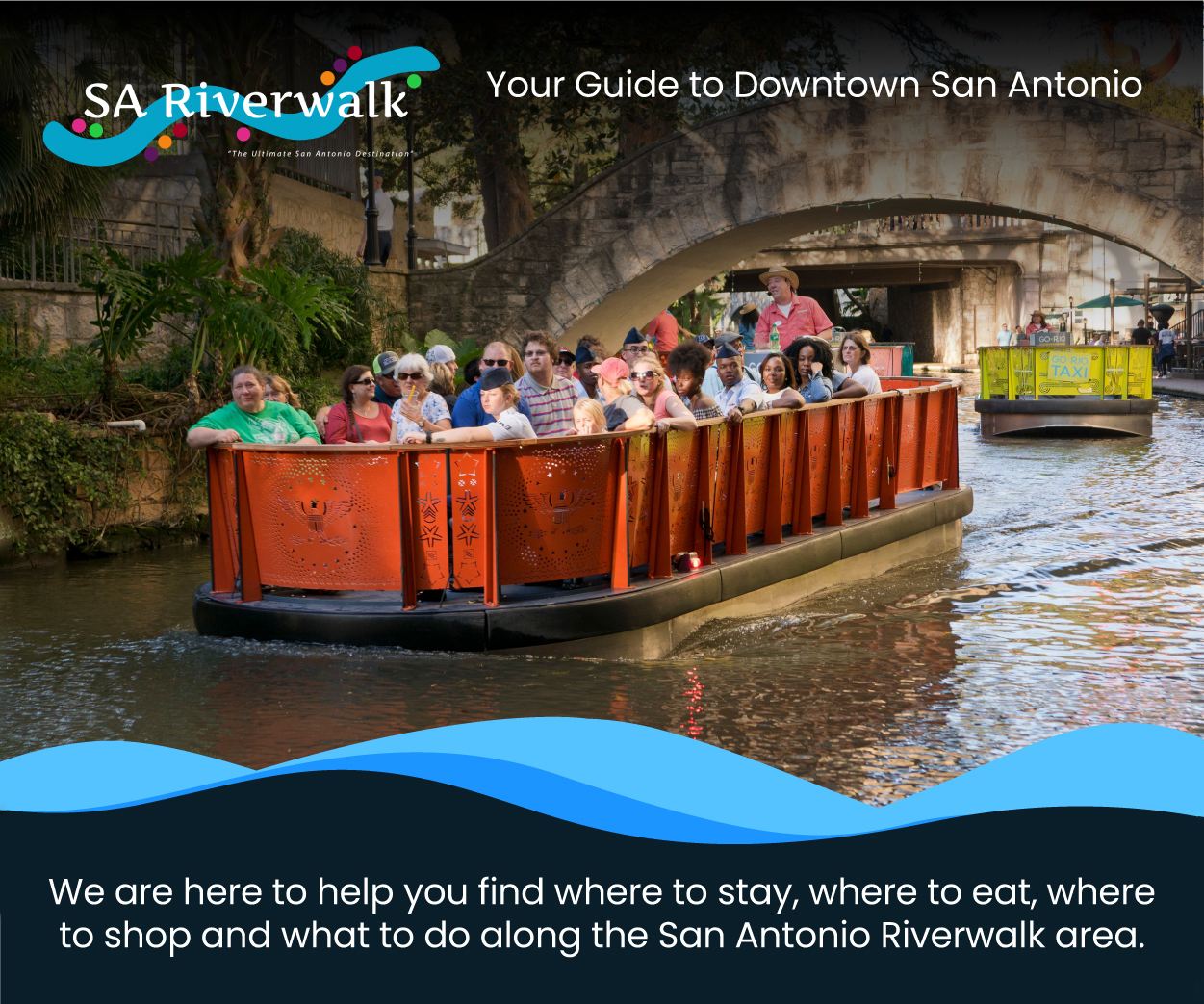
by San Antonio Private Schools | Mar 5, 2024 | Admissions Process
Photo by cottonbro studio
Insights and Benefits
Advanced Placement (AP) courses have long been a fixture in the landscape of American education, offering high school students a taste of college-level curriculum and a chance to earn college credit before even stepping foot on a university campus. Particularly within private schools, where resources and opportunities for enrichment are often more readily available, AP courses play a critical role in shaping the academic trajectories of students. Not only do they enrich the educational experience, but they also carry significant weight in the college admissions process.
For ambitious students at private schools, AP courses are more than a rigorous academic challenge; they are a stepping stone to prestigious college programs. College admissions officers frequently scrutinize transcripts to assess the level of academic rigor a candidate has pursued, and a strong performance in AP classes can be an indicator of a student’s preparedness for the demands of higher education. As such, enrollment in these courses can potentially influence an applicant’s chances for admission to their chosen institution.
It is essential, however, to consider the disparate access to AP courses across various educational contexts and how that plays into the broader conversation of equity and college admissions. While AP courses can enhance a college application, the ability to take these courses—and do well in them—is not evenly distributed among all student populations. This raises questions about the role of private education in preparing students for college and the extent to which participation in AP courses at these schools impacts their post-secondary opportunities.
The Role of Advanced Placement Courses in College Admissions
Advanced Placement (AP) courses play a significant role in the college admissions process, particularly for private school students. They serve as an indicator of academic rigor and can provide an advantage in the competitive admissions landscape.
AP Course Availability and Private School Advantage
Private schools often have more resources to offer a wider array of AP courses, giving their students a potential advantage. Availability varies significantly:
This disparity can impact college admissions by making private school students’ transcripts appear more rigorous.
College Admissions Criteria and AP Courses
AP courses are a key criterion in college admissions decisions. They provide admissions officers with:
Measure of Academic Rigor: Colleges consider the number and scores of AP courses taken.
High Scores: Suggest mastery of college-level coursework.
College Credit Potential: High AP scores can translate to college credits.
Saves Time and Money: Students could potentially graduate earlier.
It is important to note that not all colleges weigh AP courses equally, and they are only one component of a comprehensive review process.
Outcomes of AP Engagement
Students who partake in Advanced Placement courses often experience impactful outcomes that can shape their college trajectory. These outcomes are twofold: college credit and placement, and enhanced college readiness and performance.
College Credit and Placement
Students attending private schools may earn college credit or qualify for advanced placement in college courses by achieving sufficient scores on AP Examinations. Many institutions offer credit for scores of 3 or higher on the AP scale, which ranges from 1 to 5. In some cases, achieving a high score on an AP exam may allow a student to skip introductory courses in college.
Credit Policies: Vary by institution; commonly a score of 3+.
Placement Benefits: Accelerated academic path; potential cost savings.
Impact on College Readiness and Performance
AP courses mimic the rigor of college-level studies, which can enhance college readiness. Students become accustomed to a faster pace and greater depth of material, which may lead to stronger academic performance in college. Moreover, AP engagement has been correlated with higher college GPA and increased likelihood of graduating within four years.
Skill Development: Critical thinking, time management, academic discipline.
Performance Metrics: Often higher GPA; timely graduation.
Comparative Analysis
Advanced Placement (AP) courses have distinctive impacts on college admissions, which differ notably between private and public schools, as well as on an international level.
Private vs. Public School AP Course Impact
In private schools, AP courses are often seen as standard components of the curriculum. Admission officers may expect applicants from private schools to have numerous AP courses on their transcripts due to the prevalence and emphasis on such programs in these institutions. Private school students typically have greater access to a wide range of AP classes, partly because of the resources these schools possess.
AP Course AccessPrivate SchoolsPublic SchoolsVariety of CoursesHighVariableClass SizeSmallerLargerAP Exam ScoresHigher AverageVariable Average
In contrast, public school students who take AP courses can demonstrate exceptional initiative, as these courses might not be as integrated into the standard educational pathway. Public school students often contend with larger class sizes and may have less personalized instruction, yet success in AP courses can signal strong academic motivation and independent learning capabilities to admissions officers.
International Perspectives on AP Courses in Admissions
Internationally, AP courses are recognized by many prestigious institutions as a measure of rigorous academic preparation. However, the emphasis varies significantly by country and even by individual university. For example, British universities may focus more on AP exam scores than the number of AP courses taken, viewing high scores as a direct demonstration of a student’s proficiency in the subject area.
RegionEmphasis on AP CoursesConsideration in AdmissionsEuropeScore-OrientedHighly ValuedAsiaVaries by CountrySelectively ValuedAustraliaCourse & Score-OrientedModerately Valued
While in some Asian countries, AP courses may not be as well known, and their impact on admissions can depend largely on the institution’s familiarity with the AP curriculum. In other regions, like Australia, there is a balanced view on both the number of courses taken and the scores achieved, acknowledging AP courses as beneficial for academic preparation.

by San Antonio Private Schools | Feb 13, 2024 | Admissions Process
Photo by Andrea Piacquadio
A Step-by-Step Guide for Private School Students
Crafting a standout college application is a pivotal step for private school students who are setting their sights on higher education. The process, often rigorous and daunting, involves more than just academic scores—it’s about showcasing a well-rounded personality, commitment to extracurricular activities, and a strong sense of self-awareness. For students embarking on this journey, having a roadmap to navigate the complex terrain of college admissions can make all the difference.
A successful application begins with understanding what colleges are looking for in prospective students. Prestigious institutions value academic excellence, but they also seek individuals who contribute to a vibrant, diverse campus culture through their unique experiences and perspectives. It’s critical for students to reflect on how their years in private school have shaped their aspirations and how they can articulate this in their applications.
Attention to detail can significantly boost an application’s appeal. This means meticulously preparing every component, from the personal essay to letters of recommendation, to ensure that they reflect the student’s character and potential. The goal is to create a cohesive narrative that connects a student’s past achievements with future ambitions, presenting a compelling case for why they would be an asset to the college community.
Understanding the Application Process
Navigating the college application process can be overwhelming, but a clear understanding of its components and timelines is critical for private school students aiming to craft the perfect application.
Decoding Application Components
Private school students should ensure they are familiar with the various parts of a college application. Transcripts display academic performance and rigor of coursework. The Common Application or specific college application forms are typically required. Letters of recommendation, usually from teachers and counselors, provide insight into a student’s character and abilities. The personal essay is a chance to showcase personality and intellect beyond grades. A resume of extracurricular activities, awards, and community service outlines a student’s involvement outside the classroom. Standardized test scores from the SAT or ACT, although increasingly optional, often complement the application.
Key Application Deadlines
Staying on top of deadlines is essential:
Early Decision/Early Action: Usually between November 1 and November 15.
Regular Decision: Often January 1 or shortly thereafter.
Rolling Admissions: Varies between institutions, but earlier applications are favored.
Financial Aid Deadlines: Typically align with application deadlines, but may have separate dates.
Students should consult each college’s admissions website or use organizational tools such as spreadsheets or calendars to track these dates.
Private School Advantages
Students from private schools may have certain benefits during the application process. They often have access to more comprehensive college counseling resources, personalized guidance from advisors, and generally smaller student-to-counselor ratios. These factors can lead to more tailored advice, well-curated letters of recommendation, and a greater awareness of application nuances. Additionally, private schools may have established reputations with certain colleges, which can be beneficial when applications are under review.
Building a Strong Profile
A student’s college application profile should reflect a blend of outstanding academic achievements, enthusiastic extracurricular engagement, and a commitment to community service and leadership.
Academic Achievements
The student’s transcript should show a rigorous course load including honors, Advanced Placement (AP), or International Baccalaureate (IB) classes when available. Average GPA: This should ideally be above the 3.5 unweighted mark, demonstrating consistent academic excellence.
Standardized Test Scores: SAT scores above 1400 or ACT scores above 30 are often considered competitive.
Academic Awards: Recognition such as National Merit Scholar or subject-specific honors adds distinction.
Extracurricular Engagement
Colleges look for candidates with a genuine passion for their activities outside the classroom. Students should aim to hold leadership positions or show significant progression and dedication in a few select areas rather than a superficial involvement in many.
Clubs and Sports: Listing officer roles, team captaincies, or founder positions underscores leadership.
Arts and Culture: Participation in band, theater, or art exhibitions showcases a breadth of interests.
Community Service and Leadership
Demonstrating a positive impact on one’s community or assuming leadership roles in service projects is crucial. Long-term commitment to service initiatives is more impressive than a scattered approach, indicating sincerity and dedication.
Volunteer Work: Regular engagement with local charities or non-profits.
Leadership Roles: Positions such as organizer, coordinator, or team leader in community projects.
Creating a Compelling Application
The application process for private school students aims to showcase their unique strengths and align them with respective school values. This involves a carefully structured personal statement, a strategic school selection, and persuasive recommendation letters.
Crafting a Personal Statement
A student’s personal statement is their opportunity to stand out. It should reflect individuality, highlight achievements, and tie these to their ambition. They start by brainstorming life experiences, focusing on moments of growth or change that can be connected to future goals. The final draft should be a well-structured narrative that showcases the student’s voice and passion.
Begin with brainstorming: List personal milestones.
Structure the story: Create an outline with a clear beginning, middle, and end.
Edit rigorously: Seek feedback and refine for clarity and impact.
Curating the List of Schools
Students should research to create a list of schools that best match their academic and extracurricular profile. Factors to consider include program strengths, cultural fit, and financial aspects. It’s recommended to categorize schools into reach, match, and safety groups to manage expectations and increase the chances of acceptance.
Research thoroughly: Gather data on programs, faculty, and campus culture.
Categorize strategically: Label schools by probability of acceptance.
Balance the list: Aim for a mix of reach, match, and safety schools.
The Art of Recommendation Letters
Recommendation letters offer insight into a student’s character and work ethic from a third-party perspective. Students should approach teachers, mentors, or coaches who know them well and can speak to their strengths with specificity. It’s important for students to provide recommenders with a resume or a list of accomplishments to help tailor the letter to the student’s narrative.
Select thoughtfully: Choose individuals who are familiar with the student’s work and character.
Provide context: Give recommenders a resume or list of accomplishments.
Follow up: Remind recommenders of deadlines respectfully.
Finishing Touches and Submission
As a private school student finalizes their college application, meticulous review and a systematic approach to submission are crucial.
Proofreading and Revisions
He or she should read their application multiple times, checking for grammatical errors, clarity, and tone. They might also engage peers, mentors, or family members to provide feedback. It’s helpful to allow some time between reviews to approach the content with fresh eyes.
Managing Application Anxiety
Students should create a stress management plan. This might include scheduling breaks, practicing relaxation techniques such as deep breathing or meditation, and setting realistic expectations to maintain a positive mindset.
Submission Checklist
Before hitting the submit button, the applicant must ensure every component is in order:
Personal Details: Confirm accuracy of full name, address, and contact information.
Academic Records: Verify all transcripts and test scores are attached.
Essays: Recheck for any last-minute typos or errors.
Letters of Recommendation: Make sure they have been sent or uploaded.
Application Fees: If applicable, confirm payment has been processed.

by San Antonio Private Schools | Dec 29, 2023 | Admissions Process
Photo by Ben Mullins on Unsplash
Preparing for private school entrance exams can be a daunting task for both students and parents. Private schools often have rigorous admission requirements, and entrance exams are a crucial component of the application process. These exams evaluate a student’s academic abilities and potential, and they can determine whether or not a student is accepted into their desired school.
Understanding the Exams
Preparing for private school entrance exams can be a daunting task, but understanding the exams is the first step towards success. Private schools typically require students to take either the Secondary School Admission Test (SSAT) or the Independent School Entrance Exam (ISEE). Some Catholic schools may also require the High School Placement Test (HSPT).
The SSAT and ISEE are both multiple-choice tests that assess a student’s verbal, quantitative, and reading skills. The ISEE also includes a writing sample. The HSPT, on the other hand, includes sections on verbal skills, quantitative skills, reading, mathematics, and language skills.
Each exam is divided into sections, with the SSAT consisting of a verbal section, a quantitative section, and a reading section. The ISEE also includes these sections, but adds a writing sample. The HSPT has sections on verbal skills, quantitative skills, reading, mathematics, and language skills.
The verbal section of the SSAT and ISEE assesses a student’s vocabulary and ability to understand analogies and synonyms. The reading section assesses a student’s comprehension and analysis of passages. The writing sample on the ISEE assesses a student’s ability to write a creative response to a prompt.
It is important to note that some exams may include an experimental section that is not scored. This section is used to test new questions for future exams.
In summary, private school entrance exams are standardized tests that assess a student’s verbal, quantitative, reading, and writing skills. Understanding the content and format of the exams is crucial for success.
Preparation Strategies
Preparing for a private school entrance exam can be a daunting task, but with the right strategies, you can increase your chances of success. Here are some effective preparation strategies to help you ace your exam:
Practice Tests
One of the most effective ways to prepare for a private school entrance exam is by taking practice tests. Practice tests allow you to familiarize yourself with the format, types of questions, and time constraints of the actual exam. You can find practice tests online or in test prep books, and taking them will help you identify areas where you need improvement.
Tutoring
If you’re struggling with specific subjects or concepts, consider hiring a tutor. A tutor can provide one-on-one instruction and help you improve your skills in math, reading, verbal, and writing. They can also help you develop test-taking strategies and build confidence.
Test Prep Books
Test prep books are an excellent resource for preparing for a private school entrance exam. They often include practice tests, detailed explanations of concepts, and test-taking strategies. Look for books that are specific to the exam you’re taking and that have good reviews.
Writing Skills
Writing skills are essential for the essay portion of the exam. Practice writing essays and have them reviewed by a teacher or tutor. Focus on developing a clear thesis, supporting your arguments with evidence, and using proper grammar and punctuation.
Math Concepts
Math concepts are a crucial part of the exam, and it’s essential to have a solid understanding of them. Review basic math concepts such as fractions, factors, and algebra. Practice solving problems and work on developing your problem-solving skills.
Reading Comprehension
Reading comprehension is another critical part of the exam. Practice reading passages and answering questions about them. Focus on developing your ability to identify the main idea, make inferences, and understand the author’s tone.
Confidence
Finally, it’s essential to approach the exam with confidence. Believe in yourself and your abilities, and don’t let anxiety or self-doubt get in the way. Practice deep breathing and visualization techniques to help you stay calm and focused during the exam.
In summary, preparing for a private school entrance exam requires a combination of practice, study, and confidence-building strategies. By using these strategies, you can increase your chances of success and feel more prepared on test day.
Addressing Test Anxiety
Test anxiety is a common issue that many students face while preparing for private school entrance exams. It can be caused by various factors such as fear of failure, lack of confidence, and pressure to perform well. However, there are several ways to address test anxiety and improve your chances of success on the exam.
Recognize and Acknowledge Anxiety
The first step in addressing test anxiety is to recognize and acknowledge it. It is normal to feel anxious before an exam, but it is important to not let it overwhelm you. Acknowledge your anxiety and take steps to manage it.
Prepare and Practice
One of the best ways to reduce test anxiety is to prepare and practice. Start studying early and make a study schedule to ensure that you cover all the topics before the exam. Practice taking mock tests to get a feel for the exam format and to identify your weaknesses. This will help you feel more confident and prepared on the day of the exam.
Manage Time Wisely
Time management is crucial when preparing for private school entrance exams. Avoid rushing through the exam by managing your time effectively. Allocate time for each section of the exam and stick to the schedule. This will help you avoid feeling overwhelmed and anxious during the exam.
Get Involved in Extracurricular Activities
Participating in extracurricular activities can help reduce test anxiety. Engage in activities that you enjoy and that help you relax. This can include sports, music, or art. These activities can help you manage stress and anxiety, making it easier to focus on your studies.
Address Learning Disabilities
If you have a learning disability, it is important to address it before the exam. Speak to your teachers and school counselor to get the support you need. This can include accommodations during the exam, such as extra time or a quiet room.
Seek Professional Help
If you are struggling with test anxiety, seek professional help. A counselor or therapist can help you manage your anxiety and develop coping strategies. They can also provide support during the exam preparation process.
Overall, test anxiety is a common issue that many students face while preparing for private school entrance exams. However, there are several ways to address it and improve your chances of success. By recognizing and acknowledging your anxiety, preparing and practicing, managing your time wisely, getting involved in extracurricular activities, addressing learning disabilities, and seeking professional help, you can reduce your anxiety and perform your best on the exam.
Special Considerations
Preparing for private school entrance exams can be a daunting task, but there are some special considerations to keep in mind to help you succeed. Here are some important things to consider:
Strengths and Weaknesses
It’s important to identify your strengths and weaknesses before you start preparing for the exam. This will help you focus your study efforts and make the most of your time. For example, if you struggle with math, you may want to spend more time practicing math problems. On the other hand, if you excel at reading comprehension, you may want to focus on other areas that need improvement.
Competitive Nature
Keep in mind that private school entrance exams are highly competitive. This means that you will be competing against many other students for a limited number of spots. It’s important to be prepared, but also to keep a positive attitude and stay motivated. Remember that your hard work will pay off in the end.
Sentence Completions
Many private school entrance exams include sentence completion questions. These questions test your ability to understand the meaning of words in context. To prepare for these types of questions, it’s important to practice reading comprehension and vocabulary skills.
Test-Taking Strategies
In addition to studying the material, it’s important to develop effective test-taking strategies. This includes time management, guessing strategies, and staying focused during the exam. Practice taking practice tests under timed conditions to help you get comfortable with the format and pacing of the exam.
Holistic Approach
Many private schools take a holistic approach to admissions, which means that they consider a variety of factors in addition to test scores. This may include extracurricular activities, essays, interviews, and more. While it’s important to do well on the exam, don’t neglect these other areas of your application.
Ratios
Some private schools have a specific ratio they are looking for in their incoming class. For example, they may want to maintain a certain balance of male and female students or a certain number of students from different geographic regions. Keep this in mind as you prepare for the exam and consider how you can highlight your unique strengths and experiences.
Exam Types
There are several different types of private school entrance exams, including the Independent School Entrance Exam (ISEE), Secondary School Admissions Exam (SSAT), and High School Placement Test (HSPT). Each exam has its own format and content, so be sure to research the exam you will be taking and tailor your preparation accordingly.
Preschool Admissions Assessments
For younger students, some private schools require preschool admissions assessments. These assessments may include the Otis-Lennon School Ability Test (OLSAT) or other similar tests. Be sure to research the specific requirements for the schools you are interested in and prepare accordingly.
Score Goals
Finally, it’s important to set score goals for yourself. This will help you stay motivated and focused during your preparation. However, be realistic in your goals and don’t put too much pressure on yourself. Remember that there are many factors that go into admissions decisions, and a strong score on the exam is just one of them.

by San Antonio Private Schools | Oct 6, 2023 | Admissions Process
Photo by Annie Spratt on Unsplash
Navigating the private school admission process can be a daunting task for parents and students alike. With a plethora of options and steps to take, it’s crucial to have a comprehensive understanding of the various aspects involved in finding the ideal school for your child. In this guide, we will provide you with valuable insights and advice to ensure a smooth and successful admission experience.
Private schools offer unique learning environments that often emphasize individualized education and cater to the diverse needs and interests of their students. As a result, selecting the right private school involves several important factors, including type, size, location, and teaching philosophy. In addition, understanding aspects such as the application process, tuition costs, and financial aid options, play a crucial role in making an informed decision.
Key Takeaways
Consider type, size, and teaching philosophy when selecting a private school
Familiarize yourself with the application process, tuition costs, and financial aid options
Campus tours and open houses can provide valuable insights into a school’s environment and reputation
Understanding Private School Education
Private schools, also known as independent schools, form an essential part of the educational landscape. They encompass a wide range of educational philosophies and offerings, allowing for greater school choice for families. Unlike public schools, private schools do not rely on government funding, allowing them to set their own curriculum, admission policies, and tuition fees.
Charter schools, while still publicly funded, are another option for families seeking alternatives to traditional public schools. These schools operate with more autonomy in their curriculum and management decisions, often providing unique and innovative educational approaches.
While private schools and charter schools may offer certain advantages, they also come with their own set of challenges. For one, the admission process for private schools tends to be more competitive, involving standardized tests, interviews, and recommendations from teachers or other school administrators. Additionally, the cost of a private school education can be quite high, with some institutions charging significant tuition fees.
Despite these challenges, many parents find that the benefits of private schools outweigh the drawbacks. Smaller class sizes often mean more individualized attention for students, while a greater emphasis on extracurricular activities can enrich the overall educational experience. Furthermore, private schools are often able to provide a more comprehensive array of resources, facilities, and support services for students.
In summary, private school education offers an alternative to public schooling, giving families the opportunity to choose an educational setting that best meets the needs and preferences of their children. With a diverse range of options, including independent schools and charter schools, parents can make informed decisions to find the optimal fit for their children’s educational journey.
Choosing a Private School
When selecting a private school, several factors should be taken into consideration to ensure a student receives the best education tailored to their needs and interests.
Firstly, assess the type of school based on your preferences. There are various options such as Catholic schools, which emphasize religious education, or boarding schools, where students reside on campus. Identifying the right kind of school is essential for aligning with the child’s needs and values.
The curriculum is another crucial aspect to review. A well-rounded education should cover core subjects such as mathematics, science, history, language, writing, and spelling. Additionally, explore the school’s commitment to arts, music, and health programs, which contribute to a more enriching experience.
Evaluate the school’s location and school year schedule in relation to your family’s needs and preferences. Factors such as proximity to home, ease of transportation, and alignment with personal and work schedules may affect your decision.
Class size is an important consideration, as it may impact a student’s learning experience. Smaller class sizes tend to foster more personalized attention from teachers, while larger classes may offer additional perspectives and diversity.
Speaking of diversity, examine the school’s commitment to creating an inclusive environment. Look for diversity in the student body, teaching staff, and curriculum to ensure a comprehensive learning experience.
A school’s reputation is a valuable aspect to consider, as it can provide insight into the quality of education and resources. Thoroughly research each school’s academic achievements, extracurricular activities, and faculty qualifications to better understand the educational offerings.
Safety and facilities should also be weighed in the decision-making process. Evaluate the school’s security measures, emergency procedures, and on-site health services. Additionally, inspect the condition of classrooms, labs, libraries, and other amenities to ensure they meet your expectations.
Overall, a systematic and objective exploration of these factors will allow you to make a well-informed decision when choosing a private school for your child. Remember to visit multiple schools and assess each one based on the considerations listed above to find the best fit for your family.
Research and Selection Process
The research and selection process for private school admissions is crucial for parents and students. To begin, it is essential to conduct thorough research on potential schools to determine the best fit for a child’s needs and interests. This can be done by gathering information from various sources such as school websites, educational consultants, and attending open house events.
Parents should also engage in conversations with other parents, teachers, and alumni to gather insights and opinions on the school culture, academic rigor, and extracurricular activities. Reading books, articles, and online forums can be useful in understanding different aspects of school choice as well.
When selecting a private school, various factors should be considered, including the school’s location, size, academic programs, and student demographics. It is important to prioritize which factors are most essential based on the child’s unique requirements and educational goals. Additionally, consider any school-specific admission requirements, such as entrance examinations or interviews, as these may impact the application process.
Once a list of potential schools is compiled, it is necessary to narrow down the choices and create a finalized list of top selections. This process involves revisiting the initial research and comparing each school’s strengths and weaknesses. Parents should also inquire about financial aid and scholarship opportunities, as these may influence school choice.
Lastly, obtaining approval from the relevant authorities is crucial, as certain states or jurisdictions may have specific regulations governing private education. This can ensure that the chosen school complies with all necessary educational standards.
By following a systematic approach to research and selecting a private school, parents can make an informed decision to secure the best possible education for their child. Remember, a successful admission process begins with thorough research and careful selection to ensure a private school is the right fit for the student’s needs.
Exploring Campus Tours and Open Houses
One of the essential steps in the private school admission process is attending campus tours and open houses. These events provide families with valuable insights into a school’s environment, facilities, and teaching methods. By participating in campus tours and open houses, families can make informed decisions about which private school will best meet their child’s needs.
Campus tours are guided visits to a school’s campus, often led by a current student or a member of the admissions staff. These tours provide an overview of the school’s facilities, classrooms, and common areas, as well as a feel for campus life and culture. Prospective students and their families can also ask questions about the school, its programs, and opportunities for extracurricular activities. Attending a campus tour not only allows families to see the school firsthand but also encourages dialogue between prospective students and the school community.
Open houses, on the other hand, are more informal events that usually take place after school hours or on weekends. During an open house, families can explore the school’s campus at their own pace, meet faculty members, and interact with current students and parents. These events provide a relaxed atmosphere to gather information and ask questions about the school’s curriculum, extracurricular activities, and admission process.
When attending campus tours and open houses, it is crucial for families to come prepared with a list of questions to ask representatives and take notes on their observations. The following are some examples of useful questions:
What is the school’s educational philosophy and approach to teaching?
What types of extracurricular activities and clubs are available for students?
How does the school support students with different learning needs or interests?
What financial aid options and scholarship opportunities are available?
In summary, campus tours and open houses play a significant role in the private school admission process. By attending these events, families gain a deeper understanding of the school’s environment, facilities, and culture, enabling them to make an informed decision about the best educational fit for their child.
The Application Process
The private school admission process can be quite daunting, but with the right information and a clear understanding of the steps involved, families can navigate it confidently. In this section, we will discuss the essential aspects of the application process, including applications, test scores, target enrollment, and acceptance rate.
The first step in the private school admissions process is researching potential schools where families feel their child will thrive, fit in, and be challenged academically. This process can vary depending on the schools in the area, but families should generally consider factors such as location, tuition, academics, extracurricular activities, and the school’s overall reputation.
Once a list of potential schools has been created, the actual application process begins. This usually involves filling out detailed applications for each school, which may include providing information about the student’s academic history, extracurricular activities, and personal interests. It’s essential to submit applications before the schools’ respective deadlines, so diligent time management is crucial during this stage of the admissions process.
In addition to submitting applications, private schools often require test scores as part of the evaluation process. Standardized testing like the SSAT or ISEE may be required by some schools, while others may administer their tests. It’s essential to be aware of the specific testing requirements of each school and ensure students are adequately prepared. A solid grasp of the material and familiarity with the testing format can positively influence test scores.
Private school acceptance rates can vary widely and may contribute to the level of difficulty families face during the admissions process. Reach schools are those with lower acceptance rates, making them more competitive and challenging to gain admission to. Target schools have more moderate acceptance rates, typically within the 30%-50% range. It’s essential to apply to a balance of reach and target schools to maximize chances of acceptance.
Throughout the admissions process, families should not hesitate to seek advice from school counselors, admissions personnel, or even other families who have gone through the process. They can provide valuable tips and guidance on what to expect and how to best prepare for each step in the process.
By being organized, well-informed, and realistic about target schools and enrollment, families can confidently approach the private school application process, resulting in a suitable educational environment for their child.
Tuition and Financial Aid
Private school education can be a significant financial investment for families. However, various financial assistance options are available, including tuition payment plans, grants, scholarships, and need-based financial aid programs. Understanding the different types of financial assistance can help families make informed decisions and create a viable plan for their child’s private school education.
Tuition costs at private schools vary significantly depending on factors such as location, academic offerings, and the school’s reputation. Families should research the specific tuition rates for each school to which they are applying to better estimate their overall educational expenses. Some schools offer discounted tuition rates for siblings, which can be an essential factor when considering a private school for multiple children.
Financial aid is a form of monetary support allocated to families based on their financial need. To apply, families typically need to go through an application process that includes submitting financial documents like tax returns and income statements. Private schools determine financial aid based on the difference between the educational costs, including tuition and fees, and a household’s ability to pay. Financial aid packages may consist of grants, scholarships, or a combination of both.
Grants are financial awards that do not need to be repaid. Most grants are typically based on financial need; however, some may also be awarded for academic excellence or other achievements. In addition to school-offered grants, families can explore external opportunities through local, state, and national organizations.
Scholarships are another form of financial assistance awarded based on merit, such as academic achievements, athletic performance, or artistic talent. Like grants, scholarships do not require repayment. Families can explore scholarship opportunities both within the private school and through external organizations dedicated to supporting education.
Tuition payment plans are another option for families to manage the cost of private school education, as they spread tuition payments over an extended period. These plans may help make tuition payments more manageable and fit into a family’s budget, reducing the need for financial aid or loans.
Budgeting for private school education can be a daunting process, but by understanding the various financial assistance options available, families can better navigate the admissions process and seek the educational opportunities that best suit their child’s needs and aspirations.
The Role of Parents and Family
Parents and families play a crucial role in the private school admission process. They are responsible for gathering information about different schools and understanding their admission requirements. This involves attending open houses, speaking with teachers and administrators, and researching their teaching philosophies and curricula. Their involvement ensures that they select the best-fit school for their child’s educational needs and personal preferences.
During the application process, parents and families are required to submit various documents such as transcripts, recommendation letters, and personal essays. They support their child in completing the necessary paperwork on time, and they often assist in writing the essays that communicate the child’s uniqueness and potential contributions to the school community. Furthermore, some private schools require entrance exams, and parents can help their child prepare for these tests by providing practice materials or hiring a tutor.
The role of parents extends to attending interviews with their children. By participating in these discussions, parents communicate their commitment to the school community and demonstrate their support for their child’s educational journey. The interview also allows parents to inquire further about the school’s academic offerings, extracurricular activities, and any additional support services that may be available. As a result, it helps parents make an informed decision about whether the school is the right fit for their family.
Parents must also be proactive in discussing financial aspects of private education with the school. Tuition and fees can be significant, but many private schools offer financial aid and scholarship options. By exploring these opportunities, families can make private schooling more accessible and affordable.
In summary, parents and families are essential participants in the private school admission process. Their responsibilities range from research and decision-making to providing moral and financial support to their children. By actively participating in each stage of the process, parents can ensure their child’s success in gaining admission to a suitable private school and fostering a fulfilling educational experience.

by San Antonio Private Schools | Aug 23, 2022 | Admissions Process
What is the ISEE and SSAT? The ISEE (Independent School Entrance Examination) and the SSAT (Secondary School Admissions Test) are both exams that students take in order to gain admission into private schools. They are often used as a measure of student ability and...

by San Antonio Private Schools | Mar 30, 2022 | Admissions Process
Provided by eLivingtoday.com Because most colleges and universities require applicants to submit ACT or SAT results as part of admissions consideration, prepping for the test itself can be a critical component of that process. While it can oftentimes be hard to deal...

by San Antonio Private Schools | Mar 16, 2015 | Admissions Process
You think you’ve found the perfect school. What’s next? Here’s a step-by-step look at the admissions process. Interviews The initial “getting to know you” part of the process can consist of school tours, classroom observations and interviews with admissions staff. As...










